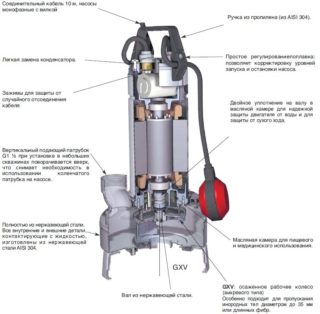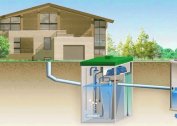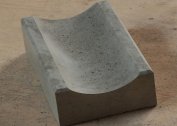A wide range of pumps complicates the task for customers who do not know which brand or model to choose, and what distinguishing features (design and technological) between the devices exist. It is especially difficult to determine the differences between a drainage pump and a fecal one.
Drainage pump
 This device got its name, since its main purpose is to pump drainage water. But with it you can solve other problems:
This device got its name, since its main purpose is to pump drainage water. But with it you can solve other problems:
- drain basements and pools;
- organize water supply from wells or ponds;
- watering plantings on a personal plot.
Purely structurally, this is a centrifugal pump. Through itself, the device drives away muddy, contaminated water, in which solid inclusions in the form of sand and pebbles not exceeding 1.2 mm in size may be present.
Fecal pump
The model is also centrifugal type, only it can not pass solid particles in the form of pebbles through itself. However, the pump easily moves soft inclusions, fibrous and any organic matter, as well as sand, along its passage channel. The maximum diameter of inclusions is 50 mm. Some models are equipped with knives, with which all sewage network sewage is cut into small parts.
Scope of the fecal pump:
- cleaning of cesspools, septic tanks and silted areas;
- drainage with a high degree of siltation;
- drainage to the septic tank, if a pressure sewer system is installed in the house.
When choosing a model of a drainage or fecal pump, it is necessary to calculate the productivity and power, taking into account the requirements for operation.
Distinctive features
Sewer drains have different temperatures. The fecal pump is manufactured in such a way that it can easily pump hot liquids. Drainage is not designed for such work, therefore, can not be installed instead of fecal. At the same time, the latter can be used in the drainage system.
Drainage pumps used in everyday life are mainly made of durable plastic or stainless steel. Fecal models made of steel or cast iron. There is a purely constructive difference between fecal and drainage pumps. It is based on the principle of operation of each device.
The drainage pump passes the pumped water through itself, so its electric motor is enclosed in a special sealed chamber so that the liquid does not get on the electric part of the motor. In fecal models, a snail is installed in which there is a suction pipe located at the bottom and an output pipe located on the side of the device. Inside the cochlea there is an impeller with or without knives. The pumped contaminated liquid enters the chamber of the cochlea, where sewage is broken by the impeller and knives and thrown sideways through the outlet pipe, which is connected to the pipe or hose.
The pump motor is located in its housing and is not protected by anything, because no liquids pass through the unit. It is always dry. But to ensure its cooling, the design provides a chamber filled with oil. It not only cools the motor, but also acts as a lubricant for the shaft and bearings.
In both categories of pumping equipment there are submersible and surface models. But in the fecal group for domestic use only submersible, so manufacturers strictly monitor the tightness of the device as a whole.
There is a price difference. Drainage pumps are cheaper than fecal pumps. For example, a pump of the Drenazhnik brand, with a capacity of 225 l / min and a liquid lifting height of 12 m with an electric motor with a power of 590 W, costs 4300-4500 rubles.With almost the same technical characteristics, a fecal device costs 6300-6500 rubles.
Installation methods
There are practically no striking differences in the installation of both modifications. However, in the fecal group there are aggregates called semisubmersible. These are pumps to which a pipe is attached with a snail at the end. On the side there is another pipe with an outlet pipe. Both pipe parts are parallel to each other and have almost the same length.
Inside the first pipe there is a shaft that connects the electric motor of the device with the impeller located inside the cochlea. He gives her a rotating moment from the motor.
The assembly of the unit is carried out outside, the pump housing, in which the electric motor is located, is not in the water. The second half with a snail, an impeller and an outlet pipe, on the contrary, is placed in the sewage, which is pumped through the second pipe.
Semi-submersible sewage pumps are used if the sewer well is deep. According to their characteristics, they are no different from submersible modifications.




